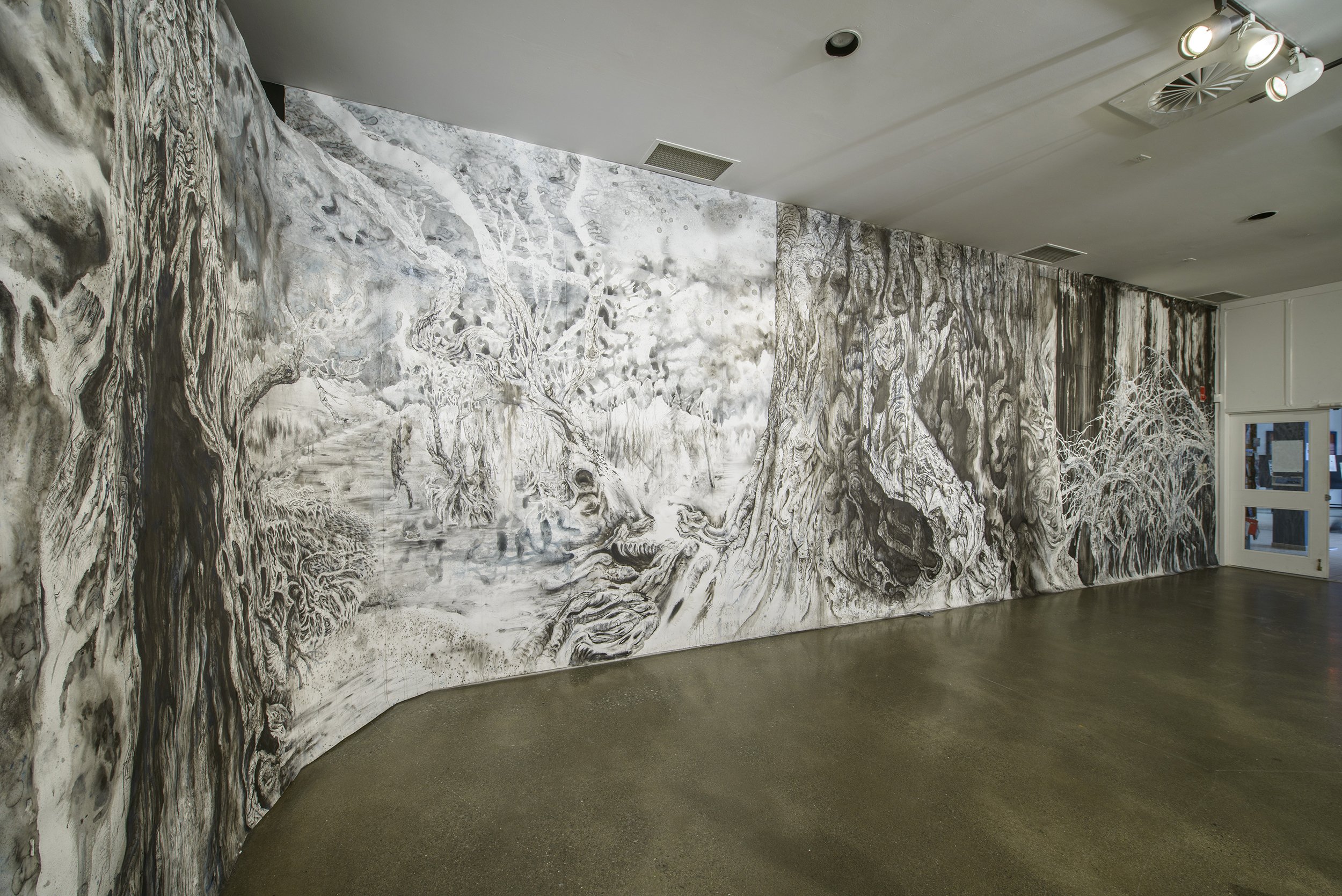
Energy
Curatorial project, Foreman Art Gallery of Bishop’s University, Sherbrooke, Quebec, Canada, 2014
Co-curated with Gentiane Bélanger and Vicky Chainey Gagnon. The exhibition gathers works by Jim Holyoak, Geoffrey Jones, Thomas Kneubühler and The Otolith Group.
A driving force behind societies and civilizations, energy—or rather the harnessing of it—displaces populations, disfigures the landscape and shapes infrastructure. These factors in turn can influence social relations, sometimes causing tension and even sparking wars. Energy roots us in a genealogy of life that science is proving to be ever more complex, intricate and unfathomable; while our limited understanding of this force and our inexpert use of its source guide us toward an uncertain future.
Commissioned for the dOCUMENTA (13) exhibition held in Kassel, Germany in 2012, the filmic work The Radiant by The Otolith Group (Kodwo Eshun and Anjalika Sagar) invokes both the political relations of the nuclear industry and its historical promise, specifically the last century’s assurances that nuclear power was a clean and safe energy source. Both fascinating and disturbing is the film’s combination of newly shot footage of landscapes and infrastructure, interviews, amateur video recordings of the tsunami, vintage promotional films and footage of the plant’s construction.
The extensive infrastructure used to capture the energy of the powerful rivers flowing through Northern Quebec is truly striking. Captured by Thomas Kneubühler’s large-format camera, the silhouettes of electricity pylons stand tall against a dreary sky like emaciated tree trunks. They seem to be the only witnesses of an activity unfolding in these remote parts, where the only contact with nature is through high-voltage transmission lines. Carried across these lines over more than 1,000 kilometres—from Radisson in Quebec to Sandy Point in the United States—the alternating current generated in the north passes through converter stations, transforming it into direct current and vice versa. Kneubühler’s Under Currents project takes us back to the source of the luminous energy that lit up the ski slopes at night in his previous work, Electric Mountains.
A Plan for a Northern Hemisphere by Geoffrey Jones is an installation that generates a series of chain reactions. The work reproduces the process of condensation brought about by temperature variations. The ensuing snowlike precipitation is then dispersed by a tall fan overhead. This episodic blizzard occurs in an art gallery, a system governed by seemingly hermetic codes. A poetic substance is born from the properties of the work’s self-generated and endlessly repeated cycle of matter. Designed in relation to the vastness of Earth’s atmosphere, Jones’ sculptural work is unsettling. This is the manner in which the artist explores the principles that govern the universe—brought sharply into focus through his eyes.
Energy is also immanent in Jim Holyoak’s creative universe, where the various facets of our existence are intertwined with natural phenomena. Inhabited by extinct species, fabulous creatures and animated matter, Holyoak’s pictorial world offers a glimpse of a labile and changing nature, where each component is part of a dynamic, moving whole. This evolving malleability is partly conveyed by Holyoak’s immersive approach. Mining the depths of our world, Holyoak’s deeply moving works are filled with anxious questioning about the imaginary, as yet non-existent worlds to which we might be heading. Because ultimately, energy is potentiality.
Excerpts from a text by Gentiane Bélanger, Vicky Chainey Gagnon, Geneviève Chevalier








Images
François Lafrance